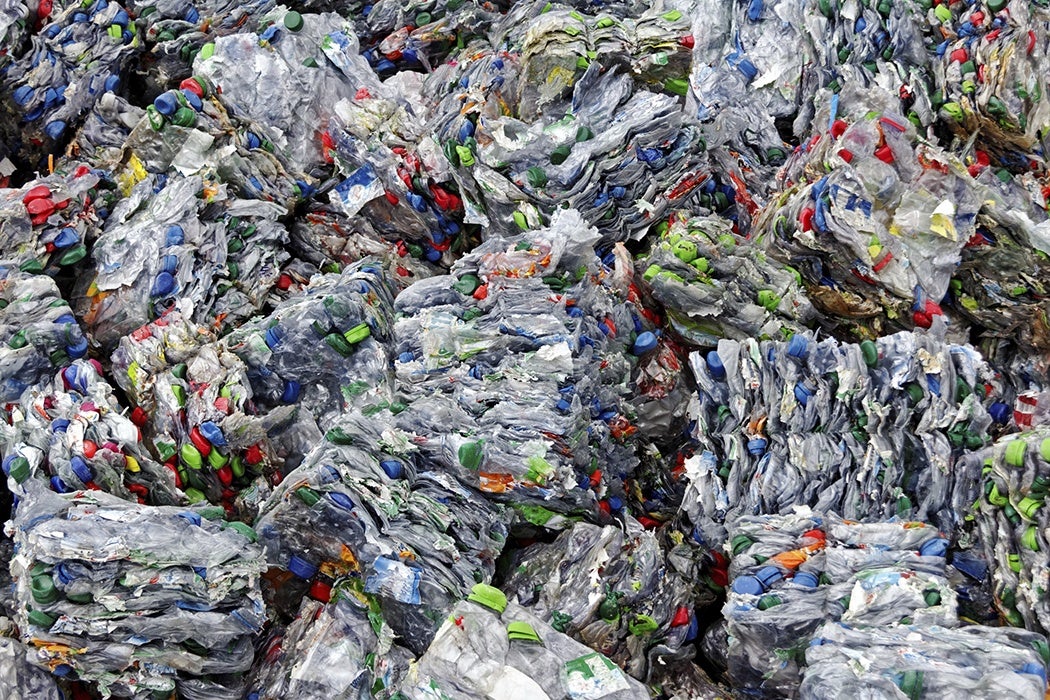The ocean is full of plastic, which we know as an intractable problem. Meanwhile, sand used for making concrete is running low. But there might be a way to solve both problems at once. A company called ByFusion has developed a process, compact enough to fit on a ship, that scoops up plastic and compresses it into completely functional cinderblocks. All plastic types are crushed together, and once painted, the final result is indistinguishable from a regular reinforced block wall. The blocks can reduce the need for concrete by replacing regular cinderblocks, preserving sand while removing unwanted plastic from the sea.
Plastic has a long history as building material—e.g., vinyl siding—but plastic recycling has long posed several challenges. Plastics are derived from fossil fuels. By some estimates as much as 10% of the world’s fossil fuel output goes into plastic, either as raw materials or consumed in the manufacture of plastic products. Thanks to extremely slow decomposition, plastic is everywhere, filling the ocean, beaches, landfills, and roadsides everywhere.
Unfortunately, efficient plastic recycling is not always so easy. Plastic is so convenient that it is used for everything, including wasteful single use packaging. The most effective means of reducing plastic waste, direct reuse, is thwarted by distance between where plastic is used and where packages are filled. Put it this way, nobody is returning an empty clamshell package to China for reuse. The dizzying variety of shapes also makes it difficult to refill used packaging, diverting more plastic into litter or less efficient recycling.
Different grades of plastic cannot be recycled together, so most of the technological innovation has been directed toward efficient ways to sort out the different kinds of plastics. A lot of recycled plastic is not even recycled into new material. Much of it is burned as an inefficient fuel.
The new plastic block process avoids these problems since the plastic does not have to be sorted, nor does it need to be molded into a particular shape. All the collected plastic is crushed into a block as-is. When turned into building materials, the plastic will not reenter the waste stream for decades, eliminating the need to recycle it again.
Unfortunately, innovative as it is, the plan is only a drop in the bucket. If we’re really going to keep plastic out of the ocean, then we need to use less of it. Fortunately, a lot of manufacturers, responding to demand, are trying to limit the volume of packaging. However, even if plastic is completely eliminated, millions of tons of waste already in existence need to be dealt with, and this new technology can help do just that.







